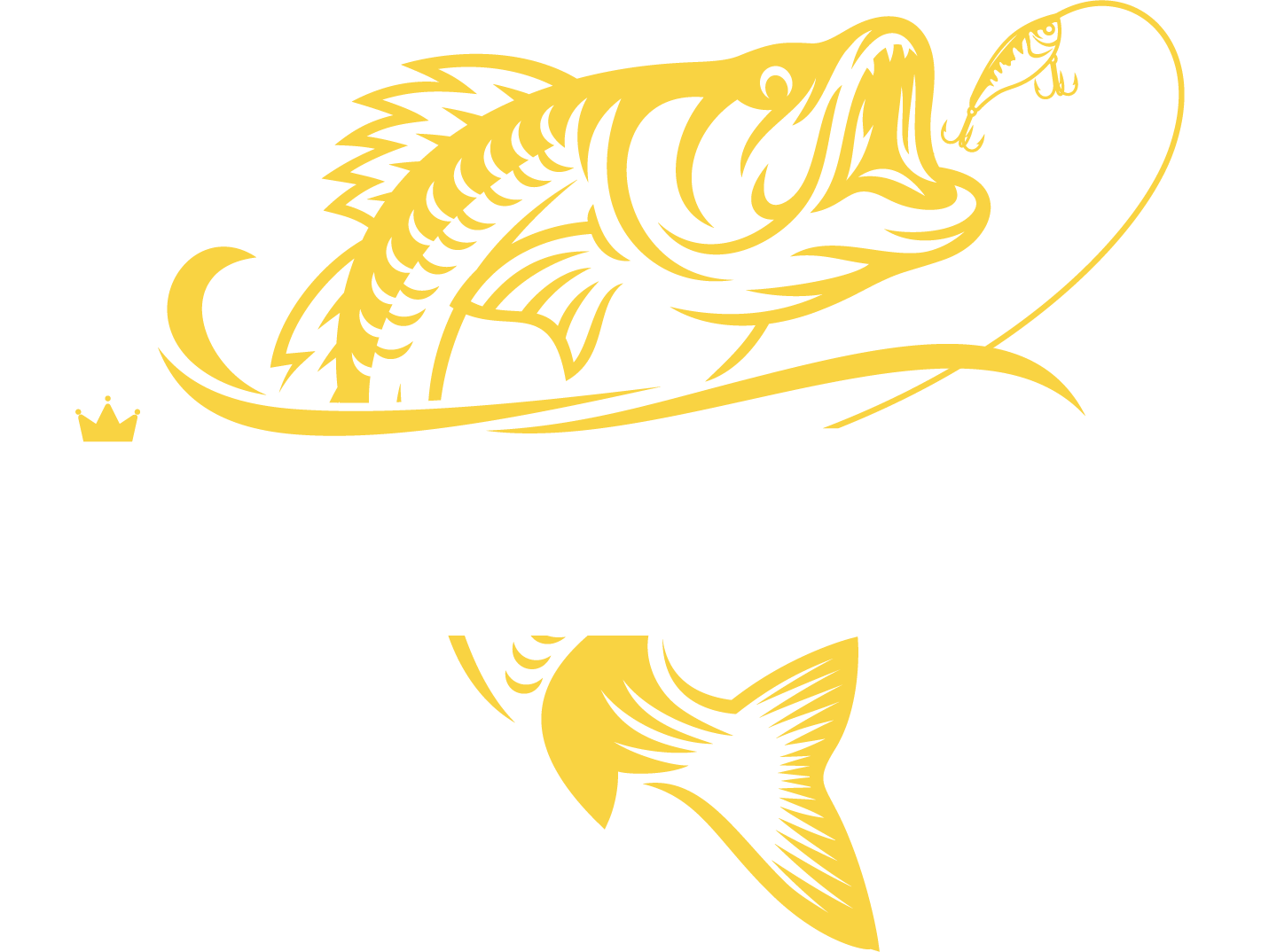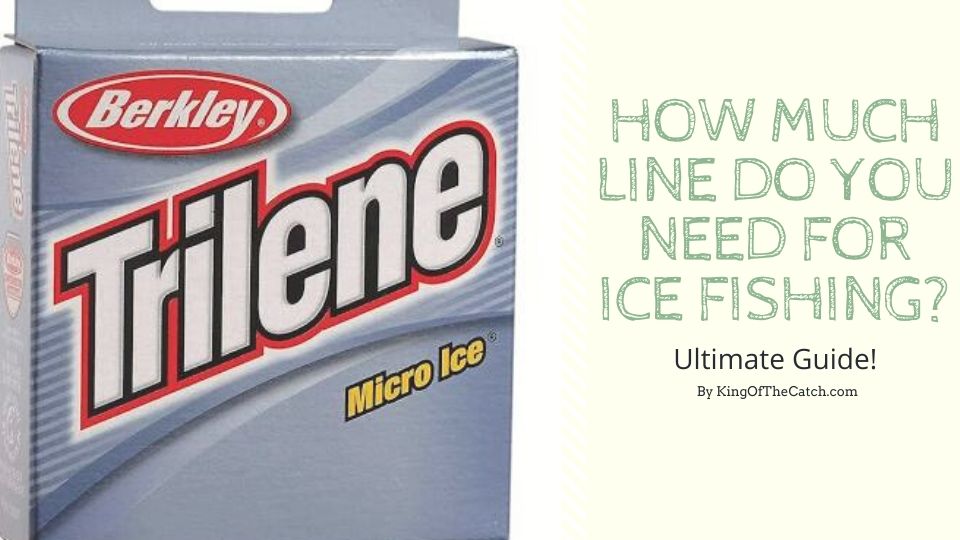When it comes to ice fishing gears, you can cut down the cost while picking up a nice ice fishing rod or reels. However, when it comes to ice fishing line, you need to spend a little more to make the most out of your ice fishing expedition.
For ice fishing, you need to make sure that your fishing line is sturdy enough to withstand even the coldest temperatures.
When I first entered the realm of ice fishing, I started with nothing extraordinary but a classic ice-fishing tip-up, gloves, minnows, and some regular braided fishing line.
How much line do you need for ice fishing?
To be honest, the regular fishing line worked fine. However, once I got my hands on an ice fishing line, particularly the Trilene Micro Ice Fishing Line, I realized what was missing. Let me put it this way – regular line for ice fishing worked fine, but the ice fishing line for ice fishing works exceptionally well!
Note: If you are interested to learn more, check out my guide on selecting and using the best ice fishing lines.
If you’re ready to pick some great ice fishing line to enhance your upcoming ice fishing expedition, you might want to continue reading.
In this article, I’ll take you through everything you need to know about ice fishing line. Also, answer some of the most asked questions: what type of ice fishing line you should pick, how much line you need for ice fishing, etc.
So, without wasting further time, let’s get started!
Can I use a regular fishing line for Ice fishing?
In ice fishing and regular fishing (open water fishing), there are some similarities – dropping the bait in the water, jigging, looking for the fish, attracting the fishes, etc. However, the gears used for ice fishing is different from regular fishing, especially when it comes to fishing line.
No doubt, the lines used for ice fishing is quite similar to regular fishing line in terms of material, looks, etc. But the differences lie in their durability, sturdiness, and flexibility. You cannot expect the lines made for open water fishing to have the ability to work well even in ice-cold water.
Thus, ice fishing lines have been introduced for this purpose. You can even find fishing lines made for both open-water and ice fishing like the KastKing SuperPower Braided Zero Stretch Fishing Line.
Let us look into the top three reasons as to why you need a specific ice fishing line:
Freezing Temperatures
This is the most important reason why you need to use a specific line for ice fishing. The water temperature during winter or snowy season is extremely cold as compared to open water. Thus, ice fishing lines are manufactured in a way to withstand these cold temperatures.
Bite Sensitivity
Another reason for using a specific ice fishing line is because fishes in cold water are less active. Thus, their bites are subtle and light. And a regular fishing line may not pick up such a sensitive bite.
Thus, ice fishing lines like braided and fluorocarbon lines are ultra-sensitive and can thus, provide you with enough movement on your rod, while a fish bites your bait.
Visibility
Most regular fishing lines are braided. But braided lines fall short in the category of visibility. And as said earlier, since fishes in cold water are less active, they are most likely to notice the line and avoid any danger.
Thus, ice fishing lines are made with the thinnest yet sturdy materials like fluorocarbon and monofilament. Fluorocarbon ice fishing lines are much lighter and less visible than any other type of line.
Types of Ice Fishing Lines
There are four primary types of fishing lines for ice fishing. Depending on your preferences, you can pick the one that suits your needs best:
Monofilament Line
Ice anglers favor the monofilament line for its soft and low memory feature. It is great for jigs and artificial lures like rattle spoons. However, as compared to its counterparts, the monofilament line is not very sensitive and durable.
Fluorocarbon Line
These are the most popular lines used when it comes to ice fishing. A fluorocarbon line is more sensitive, less stretchy, yet sturdy and durable. This line works best for catching small fishes like panfishes since they have ultra-light bites.
As compared to the monofilament line, fluorocarbon has the upper hand in terms of quality. Also, it sinks better and faster in cold water.
Braided Line
Another great type of ice fishing line is the braided line. This is a great option to catch fishes at the bottom. Braid lines are popular for their sturdiness, extra small diameters, and low stretch. However, braid lines usually end up absorbing the water, which ultimately affects its durability. But to minimize this negative effect, modern braid lines include a special type of coating. You can check out the Sufix 832 Ice Braid.
How much line do you need for ice fishing?
The amount of line you need for ice fishing depends upon how many fishing rods you’re going to use, depth of the water you’re fishing in, or how many tip-up holes you’ll set up. But in comparison to open water fishing, you’ll definitely need less line in ice fishing.
Most fishermen tend to fill up their reels. Because, though you are fishing for a walleye, you never know when a large pike might surprisingly take your bait. And the last thing you’d wish for is to miss that catch because of a short line.
Also, fishing lines often break due to abrasive environment and temperature conditions. Thus, it is always good to be on the safer side and keep some extra fish lines.
If at all you want an estimation, let’s take an example. If you’re fishing in about 20 feet of water, 60-80 feet of line is convenient. This way, you have some extra line saved on your reel, in case you meet a larger predator.
Conclusion
No matter what type of fishing you’re into, make sure you don’t compromise with the quality of your fishing lines. Particularly for me, nothing hurts more than detecting a bite only to let it slip because of the poor fishing lines. So, even if it costs you a little extra, investing in a good ice fishing line will go a long way.

Niels Thomas is a wildlife expert and fishing fanatic that works with major fishing brands like Deeper Sonar, Abu Garcia, Berkley, PENN, BassPro and Pure Fishing. Through sharing the best fishing tips, tricks, gear reviews, locations and much more he hopes to inspire fishing fanatics to start their own journey towards becoming the King of the Catch!



